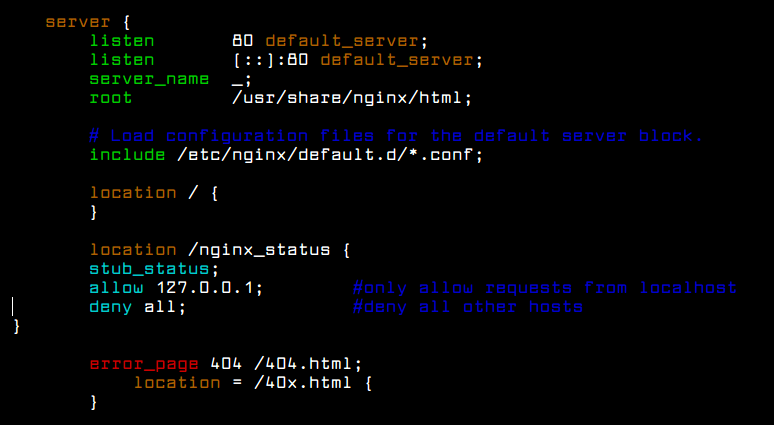¶ Monitoring Nginx
Nginx, known for its high performance and scalability, supports a variety of modules including the ngx_http_stub_status_module. This module provides basic status information about Nginx via a status page.
¶ Checking ngx_http_stub_status_module Availability
-
To check if the ngx_http_stub_status_module is enabled, use the following command:
nginx -V 2>&1 | grep -o with-http_stub_status_module

¶ Enabling ngx_http_stub_status_module
-
If confirmed, edit the Nginx configuration file
/etc/nginx/nginx.confto set up a URL for the status page:location /nginx_status { stub_status; allow 127.0.0.1; # only allow requests from localhost deny all; # deny all other hosts }

Replace 127.0.0.1 with your server’s IP address. Ensure this page is accessible only to authorized users.
-
After making configuration changes, validate the Nginx configuration for any errors:
nginx -t -
If the configuration is okay, reload Nginx to apply the changes:
nginx -s reload
¶ Accessing the Nginx Status Page
-
You can now access the Nginx status page using
curlto view metrics:curl http://127.0.0.1/nginx_statusOr, if accessible via a domain:
curl http://www.example.com/nginx_status

This setup allows you to monitor crucial Nginx metrics including active client connections, total requests, and the number of reading, writing, and waiting connections.